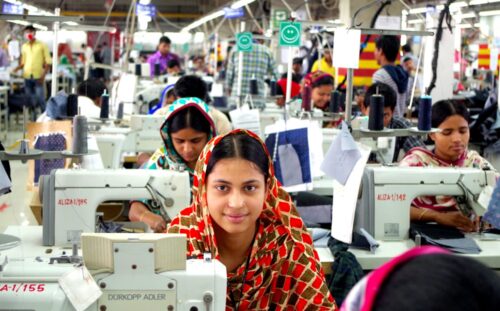Cost To Start A Garment Factory In Bangladesh
Are you considering starting a garment factory in Bangladesh? If so, you’re probably wondering about the costs involved. The establishment of a garment factory requires careful planning and financial considerations. In this article, we will explore the various expenses associated with starting a garment factory in Bangladesh, providing you with insights into the initial investment required and the factors that influence these costs. By the end, you’ll have a better understanding of the financial commitment involved in turning your dream of owning a garment factory into a reality.
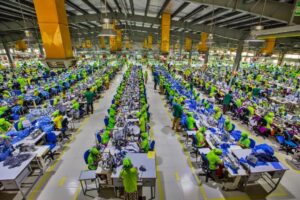
Factory Location
Rent or purchase of land
When starting a garment factory in Bangladesh, one of the first considerations is the location of the factory. You have the option to either rent or purchase the land. Renting the land allows for more flexibility and lower upfront costs, while purchasing the land provides long-term stability and potential appreciation. Consider factors such as proximity to raw material suppliers, transportation networks, and availability of skilled labor when deciding on the location.
Building construction or renovation
After securing the land, you will need to construct or renovate the building to meet the requirements of a garment factory. This includes ensuring adequate floor space, proper ventilation, and safe working conditions. Construction costs can vary significantly depending on the size and complexity of the building, as well as any additional structural modifications or safety features that need to be implemented.
Machinery and Equipment
Sewing machines
Sewing machines are a crucial component of a garment factory. The number and type of sewing machines required depend on the scale and specialization of your operations. They can range from basic single-needle machines to more advanced computerized models. It is important to consider both the initial cost of purchasing the machines and any ongoing maintenance and repair expenses.
Cutting machines
Cutting machines are essential for accurately and efficiently cutting fabrics according to patterns. These machines can significantly speed up the production process and improve productivity. The cost of cutting machines depends on factors such as cutting speed, precision, and automation capabilities.
Finishing machines
Finishing machines are used to give the final touches to garments, including processes like pressing, steaming, and folding. Investing in quality finishing machines can help enhance the appearance and quality of the finished products. The cost of finishing machines can vary depending on the specific functionalities and features required.
Embroidery machines
Embroidery machines are necessary if you plan to offer embroidered designs on garments. The cost of embroidery machines depends on factors such as the number of heads (for multiple designs simultaneously) and the level of automation. It is important to consider the potential demand for embroidery services and the return on investment when purchasing these machines.
Ironing machines
Ironing machines are used to remove wrinkles and creases from garments, ensuring a smooth and professional finish. They come in various sizes and types, such as steam irons or roller presses. The cost of ironing machines depends on factors such as capacity, durability, and energy efficiency.
Printing machines
Printing machines are used for screen printing or digital printing of designs on garments. The cost of printing machines varies based on factors such as the printing technology (screen printing, sublimation, etc.), printing size, and level of automation. Consider the demand for printed designs and the production volume when deciding on the type and quantity of printing machines.

Raw Materials
Fabrics
Fabrics are the primary raw materials for garment manufacturing. The cost of fabrics depends on factors such as the type of fabric (cotton, polyester, etc.), quality, and sourcing. It is important to establish relationships with reliable fabric suppliers who can provide consistent quality at competitive prices.
Threads
Threads are essential for stitching garments together. The cost of threads varies based on factors such as the material (cotton, polyester, etc.), thickness, and color. Consider the quantity and variety of threads needed for different garment styles and make sure to maintain an adequate inventory to meet production demands.
Buttons
Buttons are used for garment fastening and decoration. The cost of buttons can vary based on factors such as material (plastic, metal, etc.), design, and quantity. Consider the variety of buttons required for different garment styles and ensure a steady supply to avoid production delays.
Zippers
Zippers are necessary for closures in various garments. The cost of zippers depends on factors such as length, type (metal, plastic), and quality. It is important to source zippers that are durable and reliable to ensure customer satisfaction.
Labels
Labels are used to brand and provide information on garments. The cost of labels depends on factors such as material (woven, printed), size, and customization. Consider the quantity and variety of labels required for different garment styles and ensure they comply with labeling regulations.
Interlining
Interlining is a layer of fabric used between the main fabric layers to provide structure and support. The cost of interlining depends on factors such as material, thickness, and quality. Consider the specialized interlining requirements for different garment types to ensure proper functionality and desired outcomes.
Labor Cost
Hiring workers
Hiring skilled and experienced workers is essential for a successful garment factory. The labor cost includes recruiting, training, and salary expenses. It is important to consider the prevailing wages in the industry and offer competitive salaries to attract and retain skilled workers.
Salary and benefits
In addition to the basic salary, providing benefits such as health insurance, retirement plans, and paid time off can contribute to a positive work environment and help retain employees. The specific salary and benefits packages will depend on factors such as the job role, skill level, and industry standards.
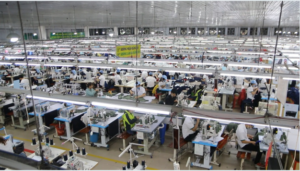
Utilities
Electricity
Electricity is a crucial utility required for running the machinery and powering other operations in the factory. The cost of electricity depends on factors such as the tariff rates, consumption, and energy efficiency measures. Consider investing in energy-efficient machines and practices to minimize electricity expenses.
Water
Water is essential for various purposes, including cleaning and dyeing processes. The cost of water depends on factors such as availability, quality, and usage. Implementing water conservation measures and recycling systems can help reduce water consumption and related expenses.
Gas
Gas is used for various purposes in a garment factory, such as heating and steam generation. The cost of gas depends on factors such as availability, consumption, and prices. Consider energy-efficient appliances and systems to optimize gas usage and minimize costs.
Compliance and Licenses
Factory registration
Factory registration is a legal requirement to begin garment production in Bangladesh. The cost of factory registration includes application fees, legal documentation, and potential consultant fees. Ensure compliance with all necessary regulations and engage professional assistance, if needed, to streamline the registration process.
Trade license
Obtaining a trade license is mandatory for conducting commercial activities in Bangladesh. The cost of a trade license includes application fees and renewal charges. Make sure to obtain the necessary trade license to operate legally and avoid potential penalties.
Fire and safety equipment
Fire and safety equipment, such as fire extinguishers, smoke detectors, and emergency exits, are crucial for ensuring the safety of factory workers. The cost of fire and safety equipment can vary depending on the size of the factory and the specific safety requirements. Invest in high-quality equipment and regular maintenance to comply with safety regulations and mitigate risks.
Environmental clearance
Obtaining environmental clearance is important to ensure compliance with environmental regulations and minimize the factory’s impact on the environment. The cost of environmental clearance includes application fees, environmental impact assessments, and potential consultancy fees. Engage experts in the field to assess and address any potential environmental concerns.
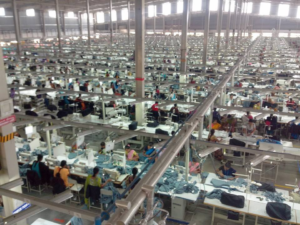
Transportation and Logistics
Importing machinery and equipment
If you plan to import machinery and equipment for your garment factory, consider the costs associated with freight forwarding, customs duties, and taxes. Engage reliable logistics partners to ensure timely and cost-effective importation of machinery and equipment.
Exporting finished products
If your garment factory aims to export its finished products, consider the transportation and logistics costs involved. This includes freight charges, custom clearance fees, and any additional documentation required for international shipments. Partner with reputable shipping agents or logistics companies to ensure efficient and reliable export operations.
Marketing and Sales
Developing a marketing plan
Developing a comprehensive marketing plan is crucial for promoting your garment factory and attracting potential customers. The cost of developing a marketing plan includes market research, advertising strategies, and promotional activities. Engage marketing professionals to help create a strong marketing strategy tailored to your target market.
Creating a brand
Creating a strong and recognizable brand is essential for establishing credibility and differentiation in the garment industry. The cost of brand creation includes designing logos, developing brand guidelines, and creating marketing collaterals. Invest in professional branding services to ensure consistency and a strong brand identity.
Advertising and promotions
Advertising and promotional activities help create awareness about your garment factory and its offerings. The cost of advertising and promotions can vary depending on the chosen channels (print, digital, etc.) and the scale of the campaigns. Allocate a budget for marketing activities to reach your target audience effectively.
Overhead Expenses
Office supplies
Office supplies such as stationery, computers, and software are essential for administrative tasks and day-to-day operations. The cost of office supplies varies based on factors such as the size of the factory and the scope of administrative functions. Consider purchasing supplies in bulk to take advantage of volume discounts.
Insurance
Insurance coverage is crucial to protect your garment factory against potential risks and liabilities. The cost of insurance depends on factors such as the insured value, coverage types (property, liability, workers’ compensation, etc.), and the insurance provider. Consult with insurance professionals to assess the specific insurance needs of your factory and ensure adequate coverage.
Accounting and legal services
Accounting and legal services are necessary for maintaining financial records, tax compliance, and legal documentation. The cost of accounting and legal services depends on factors such as the complexity of your operations and the scale of your factory. Engage reputable accounting firms and legal professionals to ensure accurate financial reporting and compliance with legal requirements.
Contingency and Miscellaneous
Unforeseen expenses
In any business venture, it is important to allocate a contingency fund to cover unforeseen expenses or emergencies. These expenses can include unexpected equipment repairs, delays in production, or additional compliance requirements. Setting aside a contingency fund helps ensure the smooth operation of your garment factory despite unexpected challenges.
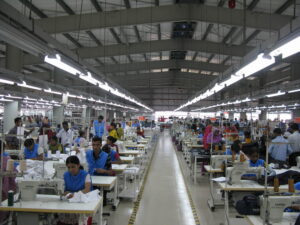
Miscellaneous expenses
Miscellaneous expenses encompass a range of various costs that may arise during the establishment and operation of your garment factory. These can include licensing fees, permits, training programs, and other miscellaneous expenses. Identify and budget for these expenses to prevent any financial surprises along the way.
Starting a garment factory in Bangladesh requires careful consideration of various factors and associated costs. By thoroughly analyzing each section, including factory location, machinery and equipment, raw materials, labor cost, utilities, compliance and licenses, transportation and logistics, marketing and sales, overhead expenses, and contingency and miscellaneous expenses, you can make informed decisions and budget effectively. Remember to review and adjust your financial projections periodically to ensure the long-term success and sustainability of your garment factory.

